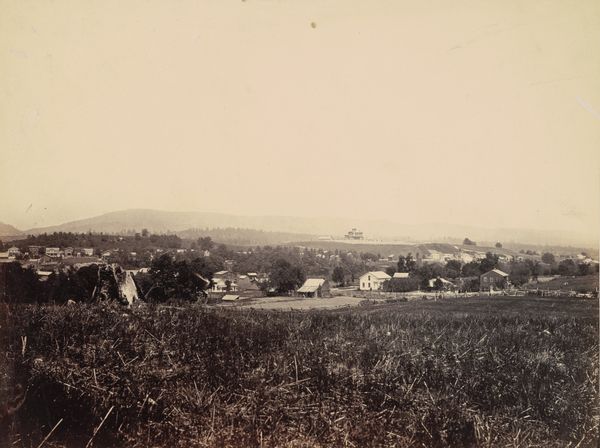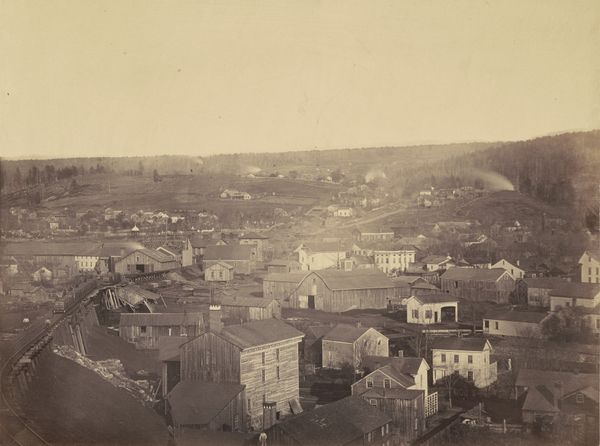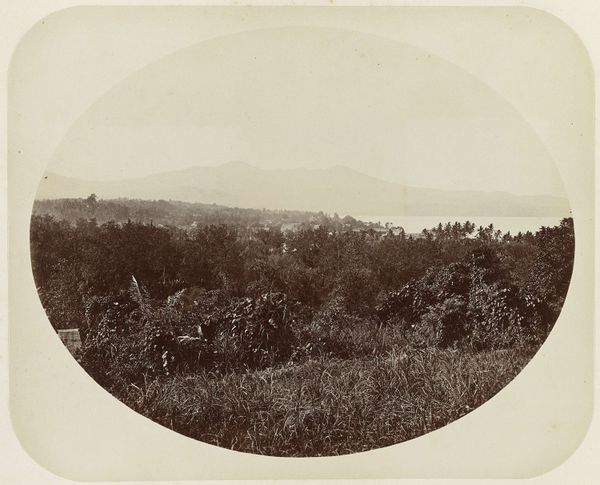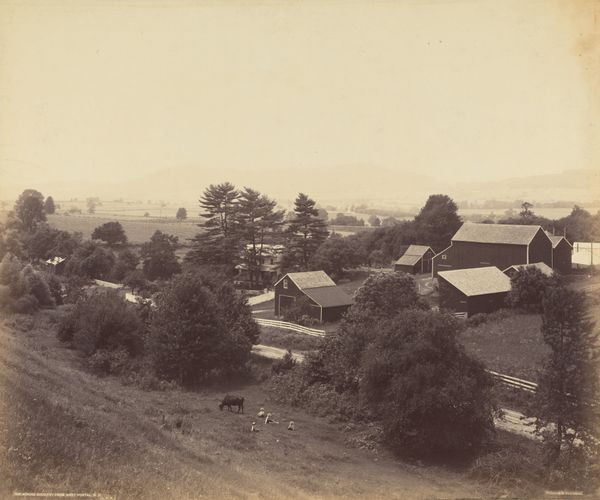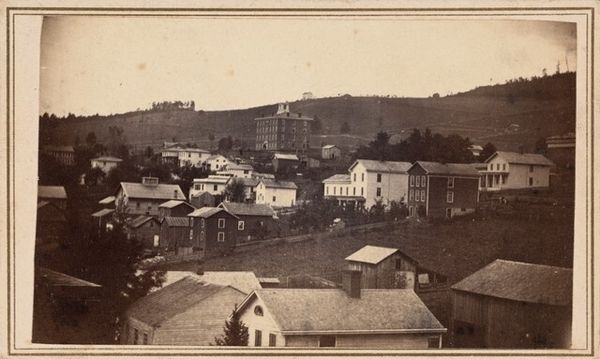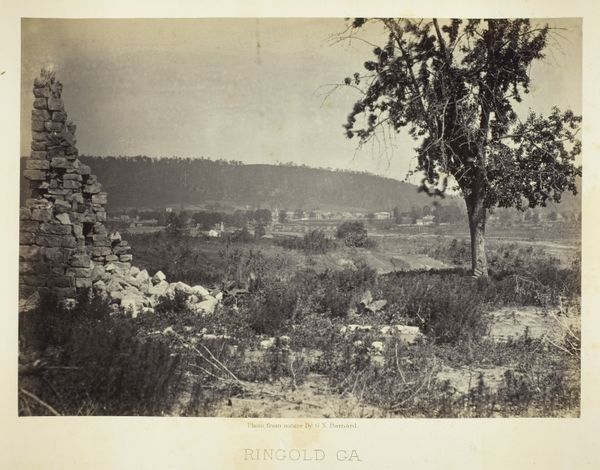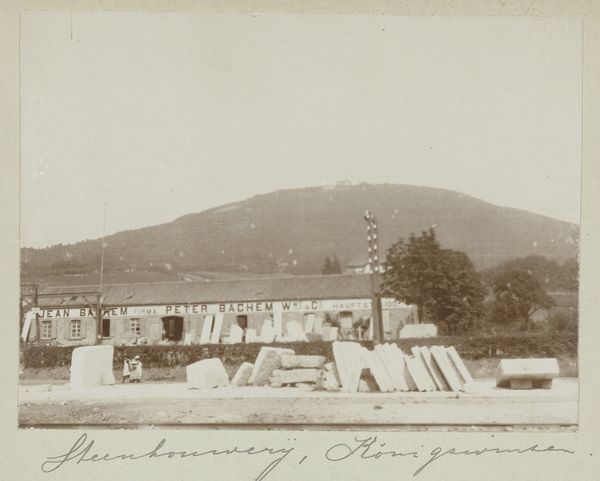
photography, gelatin-silver-print
#
16_19th-century
#
landscape
#
photography
#
gelatin-silver-print
#
monochrome photography
#
realism
Dimensions: image/sheet: 30.6 × 40.9 cm (12 1/16 × 16 1/8 in.) mount: 45.7 × 55.7 cm (18 × 21 15/16 in.)
Copyright: National Gallery of Art: CC0 1.0
Curator: Before us hangs Thomas H. Johnson's "Von Storch Breaker, Del. & Hudson Canal Co.," a gelatin-silver print dating from circa 1863 to 1865. Editor: There’s an undeniable desolation conveyed by this gelatin-silver print. The sepia tones only amplify the stark, almost ghostly atmosphere, like a tableau of an industrial invasion upon a formerly pastoral scene. Curator: Indeed. Johnson's photograph offers a critical window into the industrial expansion that transformed the American landscape during the mid-19th century. It is depicting the coal mining operations in Pennsylvania, particularly the Delaware & Hudson Canal Company’s coal breaker. Editor: Let’s not forget about that stark foreground. Notice the tree stumps. Those vacant signifiers scattered throughout the landscape disrupt any semblance of classical composition, creating this immediate visual tension between nature and industrial advancement. What readings have we had around it? Curator: Most critics seem to concur with your reading. Johnson’s positioning invites the viewer to consider the social ramifications. While industry offered progress and economic growth, what exactly was the cost being borne by both the land and, crucially, the labor? Consider this piece next to other landscapes; here Johnson avoids the sublime or picturesque qualities typical of many 19th century landscape paintings. Editor: Yes. Instead, Johnson is presenting something quite different. A topographical document that functions as implicit social critique by visually opposing human industrial progress against that landscape, denuded as it is of raw material. In its sharp delineation, one may grasp echoes of August Sander’s typologies, if only slightly avant la lettre. The materiality and monochrome imbue the scene with the weight of time, almost rendering progress ghostly. Curator: I agree. He provides a stark image of transition, capturing both the promise and the destruction inherent in industrial development. By drawing the eye through each plane to reach that not-too-distant city, he manages to show both our dependence on and, simultaneously, destruction of natural material and resources. Editor: It certainly is powerful to examine the forms in relation to one another and their arrangement. The scene’s formal structure makes this tension unavoidable for viewers. Curator: A photograph rich in semiotic resonance and, as such, one must give credence to Johnson's success. Editor: The work offers much on the topic of cultural transformation in that brief historical moment, even today.
Comments
No comments
Be the first to comment and join the conversation on the ultimate creative platform.
